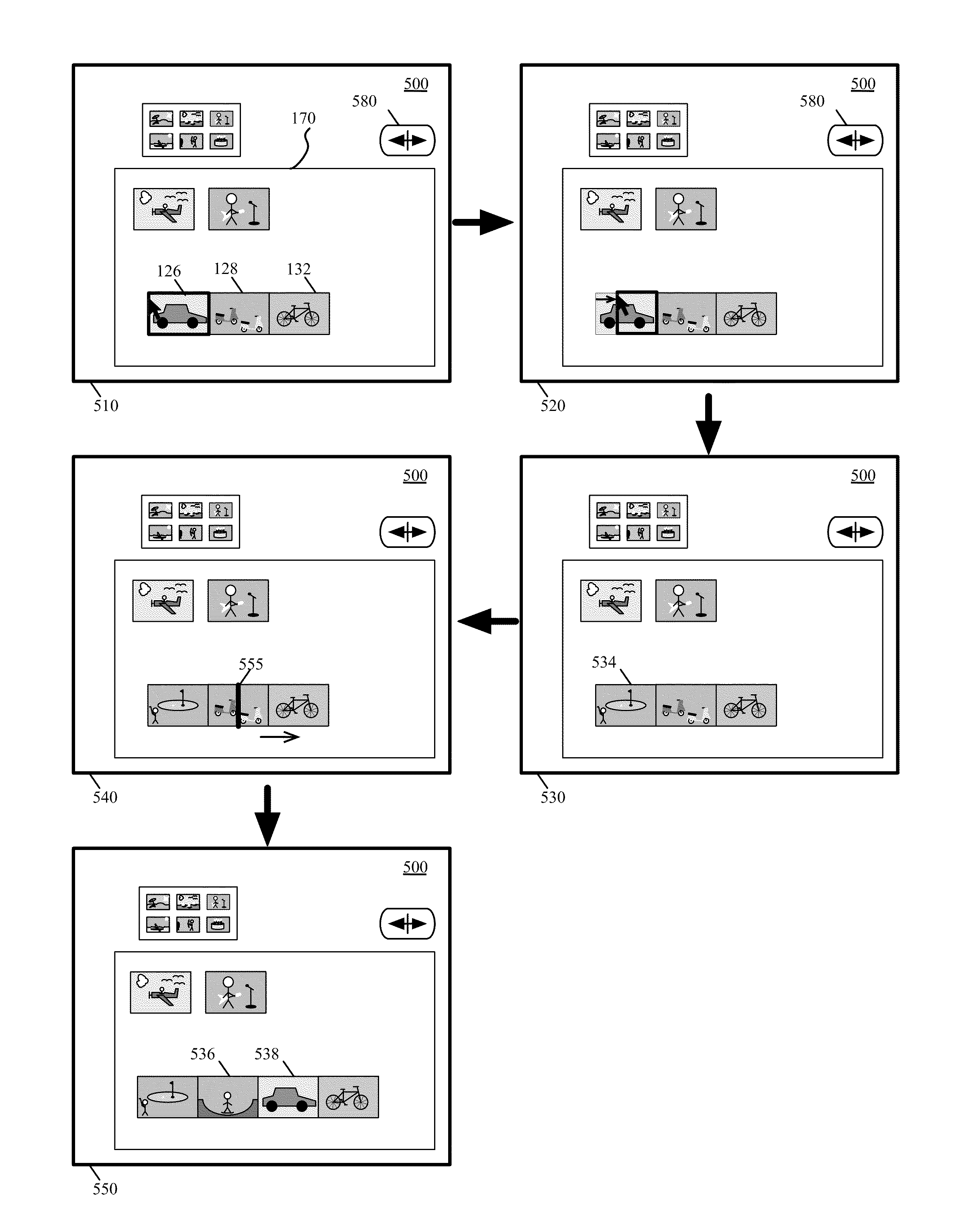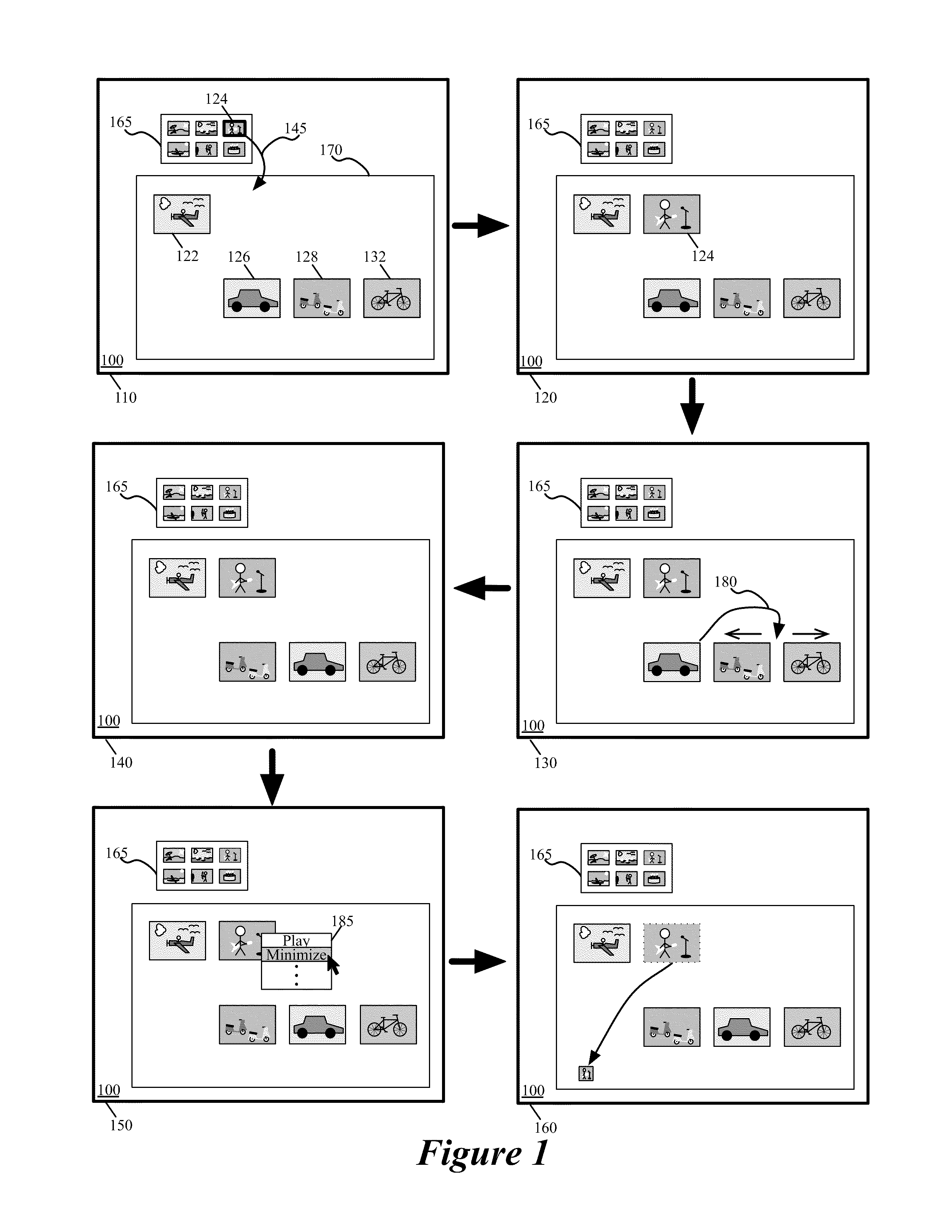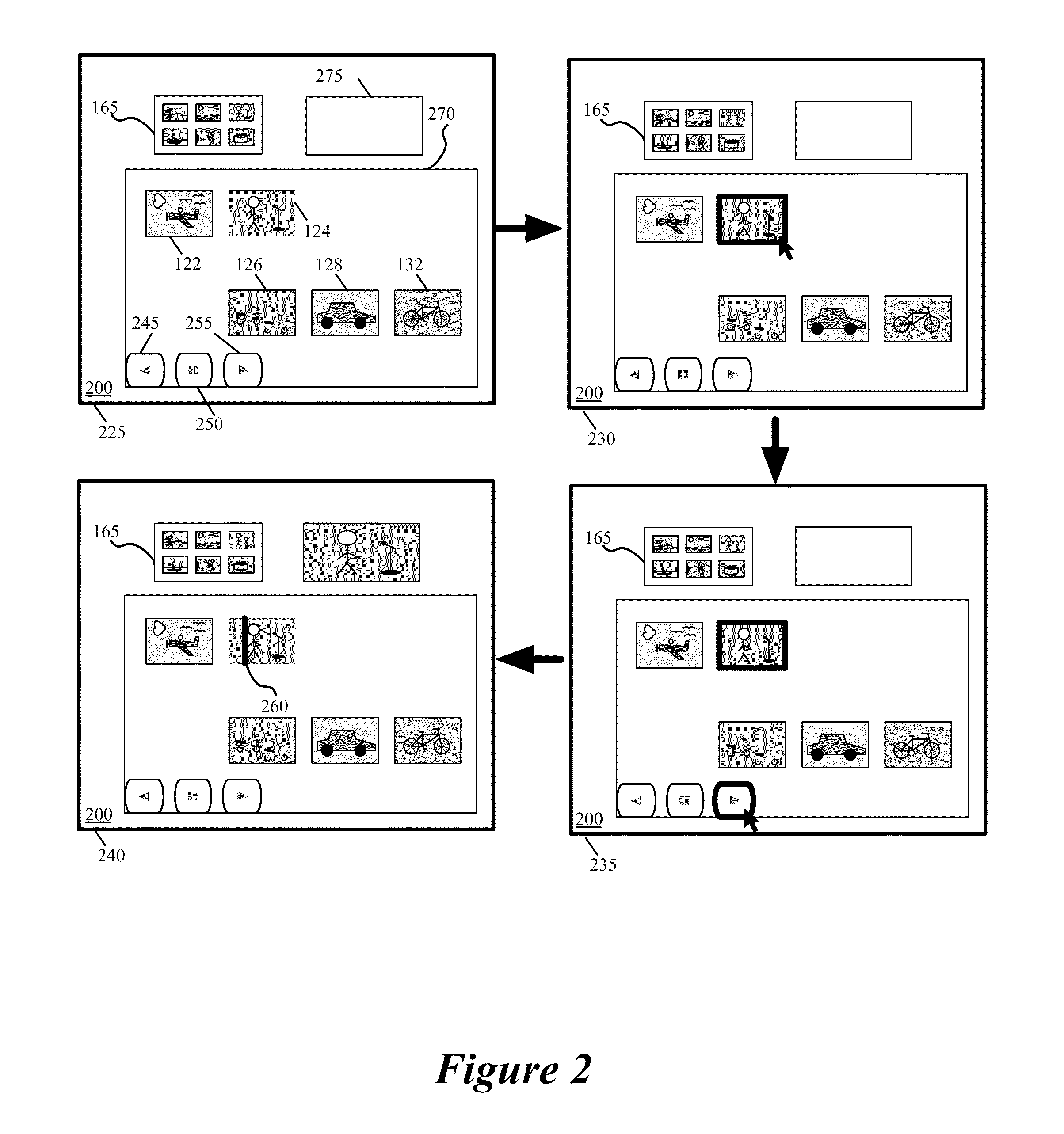Dynamic video editing
a video editing and dynamic technology, applied in the field of dynamic video editing, can solve the problems of overwhelming or discouraged users, users cannot easily try out different ideas of compositing media content elements and seeing the resulting media presentations, etc., and achieve the effect of reducing the number of media clips
- Summary
- Abstract
- Description
- Claims
- Application Information
AI Technical Summary
Benefits of technology
Problems solved by technology
Method used
Image
Examples
Embodiment Construction
[0116]In the following detailed description of the invention, numerous details, examples, and embodiments of the invention are set forth and described. However, it will be clear and apparent to one skilled in the art that the invention is not limited to the embodiments set forth and that the invention may be practiced without some of the specific details and examples discussed.
[0117]For a media-editing application that creates composite presentations, some embodiments of the invention provide a novel free-form space (e.g., display area) that allows a user to both visually organize media clips and composite media clips in order to create composite presentations. In some embodiments, a media clip is a graphical representation of a piece of media content that is stored on the computing device on which the media-editing application executes or on a computing device to which the media-editing application has access. Examples of such media content include audio data, video data, text data...
PUM
 Login to View More
Login to View More Abstract
Description
Claims
Application Information
 Login to View More
Login to View More - R&D
- Intellectual Property
- Life Sciences
- Materials
- Tech Scout
- Unparalleled Data Quality
- Higher Quality Content
- 60% Fewer Hallucinations
Browse by: Latest US Patents, China's latest patents, Technical Efficacy Thesaurus, Application Domain, Technology Topic, Popular Technical Reports.
© 2025 PatSnap. All rights reserved.Legal|Privacy policy|Modern Slavery Act Transparency Statement|Sitemap|About US| Contact US: help@patsnap.com



